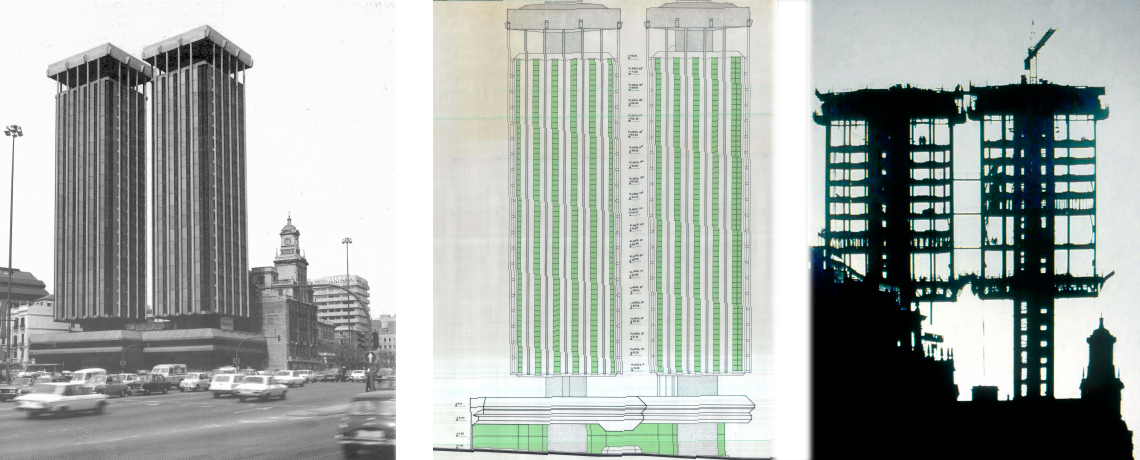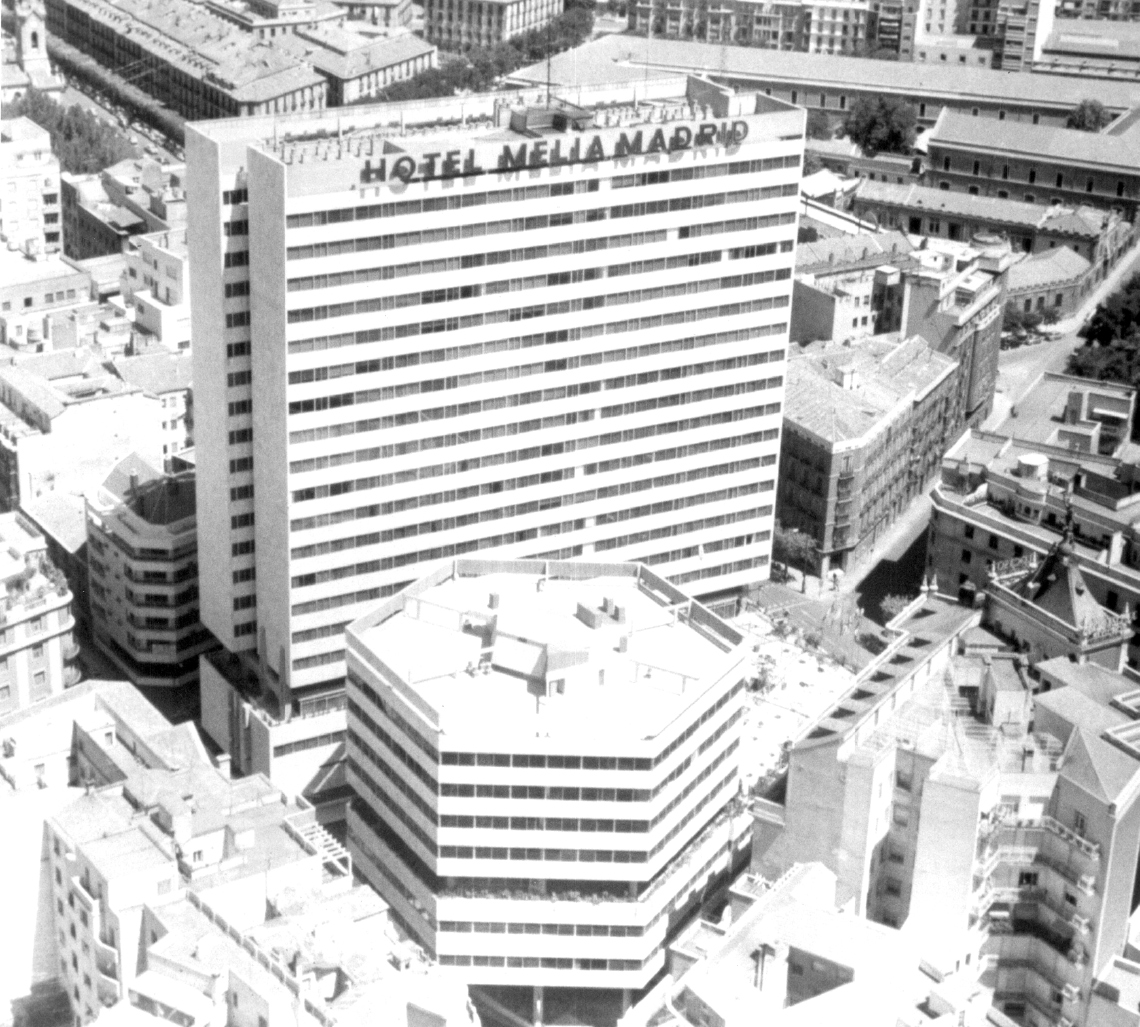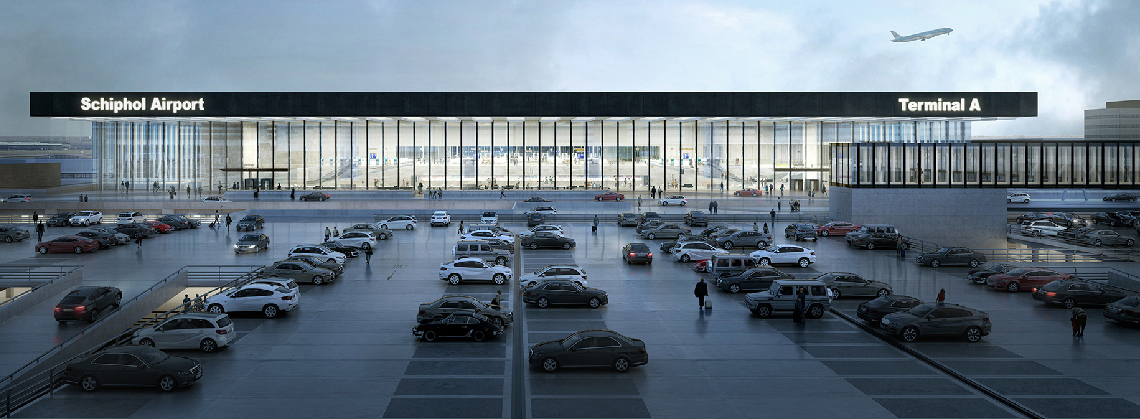
Carlos Lamela (Madrid, 1957) is superior architect by the Technical School of Architecture of Madrid in 1981 and "designer" by the UIA of Florence (Italy) in 1984. His entire professional career has been spent at the architecture firm of Estudio Lamela, founded by his late father, Antonio Lamela, in 1954, and of which he is currently the chief executive and owner.
Within his work, it is worth mentioning the recognition achieved for his proposals for large civil facilities such as airports and football stadiums, awarded by international critics for their excellence. The latest expansion of the Santiago Bernabéu Stadium, the Real Madrid Sports City, the new Krakow and Lublin Stadiums in Poland, the Santander Bank Contact Center in Mexico, the EXPO Zaragoza Business Park, the new John Deere headquarters in Madrid and Caja Badajoz in Badajoz or the Astro Tower in Brussels. As for the airport projects, in addition to the Madrid-Barajas T4 and T4S with Richard Rogers, they also developed the two new terminals of the Warsaw Airport, the expansion of the Gran Canaria Airport and are working on the new Tijuana terminal in Mexico. The new Amsterdam Schiphol airport terminal will join them in the coming years, after having won the competition along with Kaan Architects.
Estudio Lamela has been committed to internationalization since the 1970s, currently having offices in Madrid, Mexico City, Warsaw and Doha. The commitment to sustainability has been another of the pillars of the architecture of Carlos Lamela, who has served as a professor at the Polytechnic University of Milan and has offered various presentations at the Cornell and Harvard Universities. He has also been president of the Spanish instalment of the Urban Land Institute.
Carlos Lamela grew up among sketches, plans, models and buildings of all kinds. Son of Antonio Lamela, one of the most important authors of Spanish architecture in recent decades, he was predestined to follow his father's footsteps; and so he did. He currently runs the Estudio Lamela, founded by his father in 1954; An office that has seen the emersion of more than 1800 projects originally oriented towards the construction of residential complexes to accommodate international tourism that arrived at the southern coast of Spain and the islands. The Colón Towers soon shot up in popularity and, today, Estudio Lamela is an international benchmark with its own offices in Madrid, Warsaw, Doha and Mexico City, and with major constructions in more than 30 countries.
"T4's project marked a before and an after for our office"
As we were saying, having grown up amongst architecture, your professional future seemed determined, or were you not so sure about it in your youth?
The truth is, I consider myself a vocational architect, although I recognize that when I was very young I also dreamed of being a pilot because I have always really liked aviation. The fact that my father was already a well-known architect at the time influenced a lot in guiding my vocation. In addition, I was also good at drawing and crafts, so at 12 years old I already knew that I wanted to be an architect.
Besides your father, what other authors influenced you in your beginnings?
At first, I had the influence of my father and my uncle Amador, who was also an architect. Then, in my student days, that influence came from the teachers with whom I shared the most trust; even before starting my degree, since at that time we had preparatory courses in mathematics and drawing, very important subjects for those of us who wanted to study architecture.

What did that child that wanted to follow his father's footsteps dream of designing?
When I was little I drew many buildings and, above all, many skyscrapers. I was impressed by those towers like the Empire State that appeared in books and movies. In addition, at that time, large infrastructures such as airports or football stadiums were not built, so the references I had were large towers for residential or hotel use. When I was 5 or 6 years old, my father was lucky enough to design the Hotel Meliá Princesa, one of the first skyscrapers in Madrid, and I vividly remember that from the beginning I would tag along when he visited the construction, when there were only trucks moving dirt in a big pit. Then came the Colón Towers, a work of great influence for our whole family which was constantly in the media and which everyone talked about. If to these influences we add my predilection for heights, it was clear that my dream was to build skyscrapers.
Therefore, you are a strong advocate of high-rise architecture...
High-rise architecture, when applied in a balanced way, is a great solution; defended by great urban planners as a very sustainable construction category. Their land use is much less than extensive construction and the costs of infrastructures, when the city is dense, are lower.

Your studio has headed thousands of works, although as a result of the Madrid T4 project, it is increasingly taking center stage in his activity. Have you sought that specialization?
It's funny because for one reason or another I have always found the world of aviation very attractive, in fact, I even became a private pilot so I could fly in a flight club with friends. Then, after the T4 contest, I was able to unite both passions: aviation and architecture.
The truth is that the T4 project was extraordinary both for its magnitude and for what it meant for our studio. We were fortunate to form an exceptional team with Richard Rogers to develop what was, at the time, the world's largest terminal built all at once. This opportunity was a before and an after for our office and boosted our specialization in this area. From there we had the opportunity to carry out many airport architecture projects, including the expansion of the Gran Canaria airport, two terminals in Warsaw, two others in Tijuana, which we are working on, and the new Amsterdam-Schiphol terminal. that we have recently been assigned along with Kaan Architects.
From an architectural point of view, how should these 21st century airports be proposed?
Aviation, like other activities in society, has changed quite a bit in recent years. Although planes continue to have a very similar geometry since the first jets were put into operation, airports have changed a lot because they have gone from being used by a very small part of the population to being a mass phenomenon. Today's terminals have to process the circulation of millions of passengers with all the peculiarities that this entails. There have also been political, social, economic, security changes in the habits of travelers... Airports are, therefore, buildings in constant agitation. In fact, it is very difficult to foresee what will happen to airport constructions because they are very long-term investments, with enormous costs, that need their maturing time. Creativity is far ahead of the time needed for its construction and implementation. For example, the project we have in Schiphol will be inaugurated in 5 or 6 years, so we already have to foresee what a terminal will be like in that time; forecasts like that are difficult to make.
Another of the expansions they have signed is that of the Gran Canaria Airport, a work in which CORTIZO is also present with its solar protection blade systems. What are the keypoints to this project?
Originally, it was a complicated construction because it was an expansion project, which implies an added difficulty. In addition, we were facing one of the airports with the most traffic in Spain placed in a location with architectural and climatological characteristics that implied very specific conditions. On the other hand, this project was planned before the crisis, but was carried out during it, forcing us to make a very large adaptation to the new socio-economic framework. But everyone's effort to optimize resources resulted in a project that we are very satisfied with.

We were talking about solar protection blades, a solution aimed at improving the energy efficiency of buildings. Precisely, sustainability is one of the essential aspects of current architecture. What has been more decisive in its encouragement: the regulatory imposition or the awareness of architects and society?
Traditional architecture anywhere in the world has always been tremendously sustainable, it is not a contemporary invention. All the architectural buildings in the world, including traditional architecture, were adapted to the environment, materials and climate. When international architecture arrived, in the intellectual manifestos of last century's 20s and 30s, it was decided to unify architecture and transfer ideas from one climate to another. This is why buildings in southern countries start to become glass when they really didn't need as much light or as much sun. With the first oil crisis, people were unable to pay the bills for the energy consumed. At that time, in the 60s-70s, my father became a standard-bearer of sustainability and began to have a very clear awareness that the components of the façades of buildings had to adapt to the energy reality itself and to the economic situation of the country. Our studio was always very committed to sustainability, even when the words sustainability and ecology did not exist in architecture. In fact, my father spoke of naturalism. This led him to conceive two new sciences: "geoism" and "cosmoism", for a supranational territorial reorganization with which to solve such problems.
On the other hand, rehabilitation has once again gained prominence in Spanish architecture in recent years. Why do you think it had been relegated to the sidelines?
It is a matter of logic. When we are consuming floor space to make buildings that expire at 30 or 40 years old because techniques, façades and facilities change; the logical thing to do, rather than continue building and occupying new spaces, is to remodel the existing one. Although it is also true that the crisis has made us much more “recyclable” and has led us to further value and optimize our assets.
The crisis, which was devastating for the sector, forced many offices to look for opportunities abroad. However, you had already internationalised ahead of time, why?
At Estudio Lamela we had an international vocation very early on. My father already started working abroad in the 70s in both South America and the US and, when we began to see that the Spanish market was getting too small because there were only two or three major infrastructures a year, we opted to go overseas to continue making airports, stations or football stadiums. It is also true that going abroad is not the panacea of the crisis. It is a very complex thing that requires very large framework and economic effort, it requires highly educated, specialized, polyglot people.

The most surprising thing is that in Spain the large construction companies have historically led numerous international projects and infrastructures, while architecture studios have found it more difficult. What is the reason for this trend? Why do you think that some administrations valued more the proposals of outside architects for their projects?
Unfortunately, that has always happened and it is a problem of a certain "papacy"; no one is a prophet in their land and there is always a tendency to value the outsider more even if it is of a lower quality. I believe that Spanish architecture is at a very high level and very prepared to work anywhere in the world. In fact, the reason why Spanish companies in the sector are international leaders is due to the training of architects and engineers at a certain time, especially from the 1940s-1950s. The Spanish technical universities have always had a very high level and the engineers and architects who emerged at that time were the ones who founded the great construction companies. I'm talking about the Dorado, the Entrecanales, the Ferrovial... who already started working abroad in the 1970s. It is true that the Spanish always had difficulties with languages, so those initial outings were mainly focused on Latin America. But, as the new generations, better trained in languages, started leaving we were by this time prepared to work around the world.
Now, to finish off. In addition to the Amsterdam Airport that we mentioned at the beginning, what projects are you working on now?
We are now tendering for the Prague airport and we have many hotel and residential projects in Mexico, where we have a very active office. In addition, the national market has been reactivated quite a bit and we also have an important portfolio of projects for next year here.
